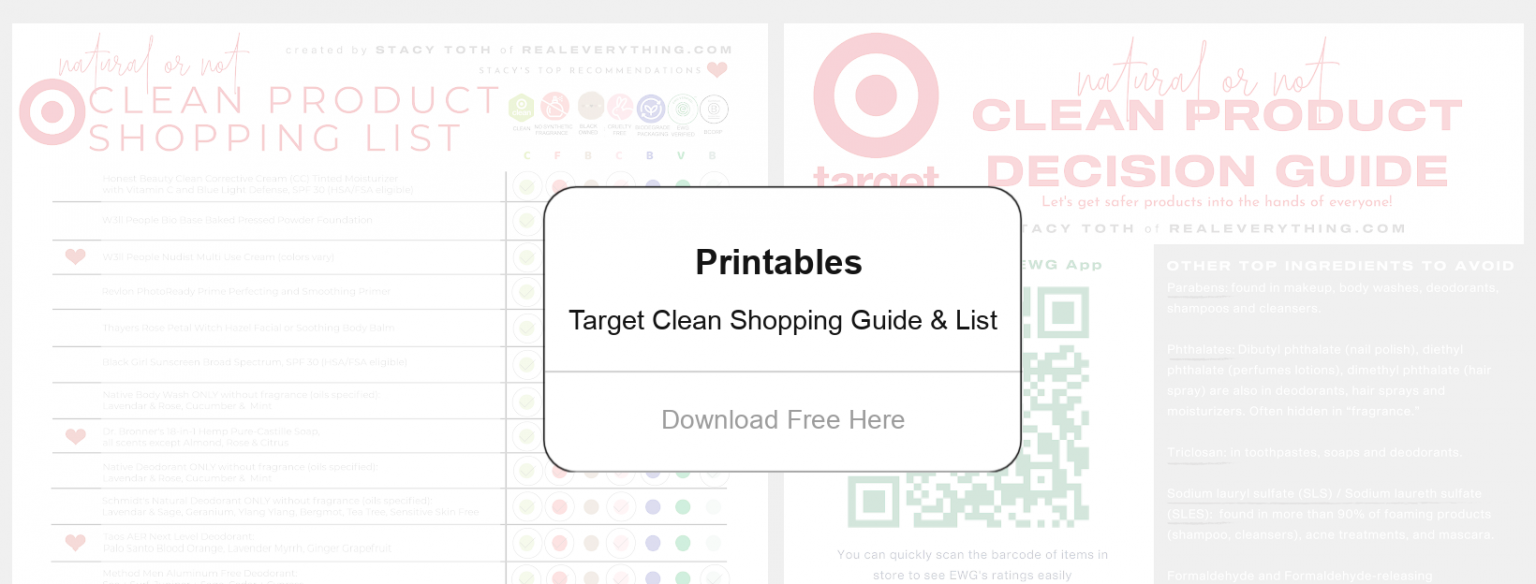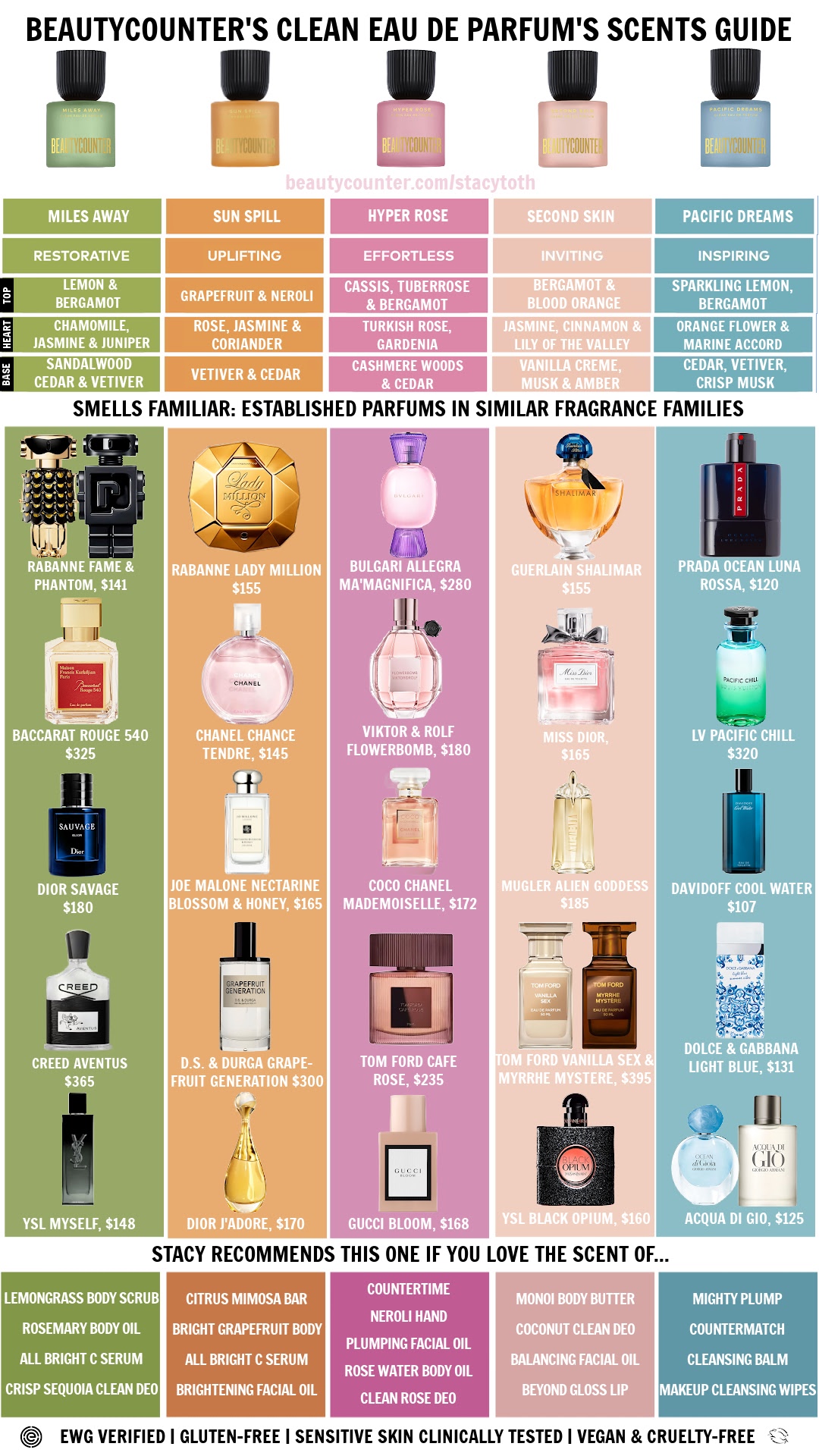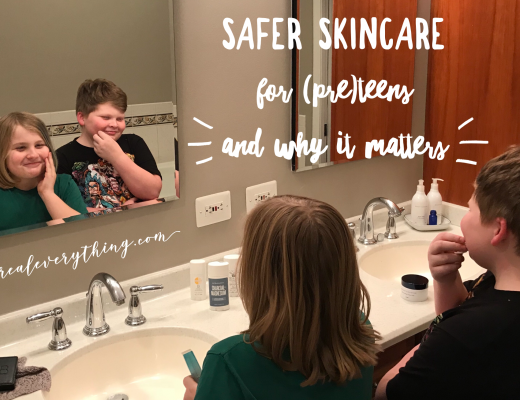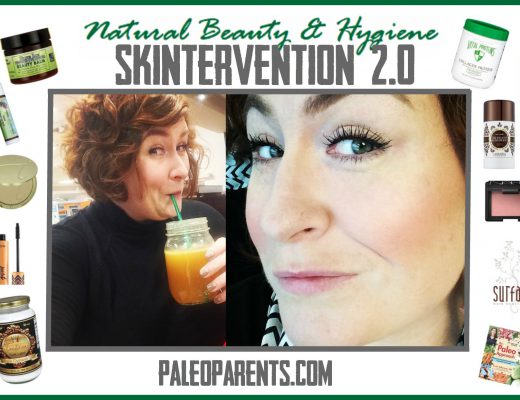Why the Fragrance Loophole is Bad: the case for avoiding any products with “fragrance” or “parfum” in their ingredients, and what to use instead.
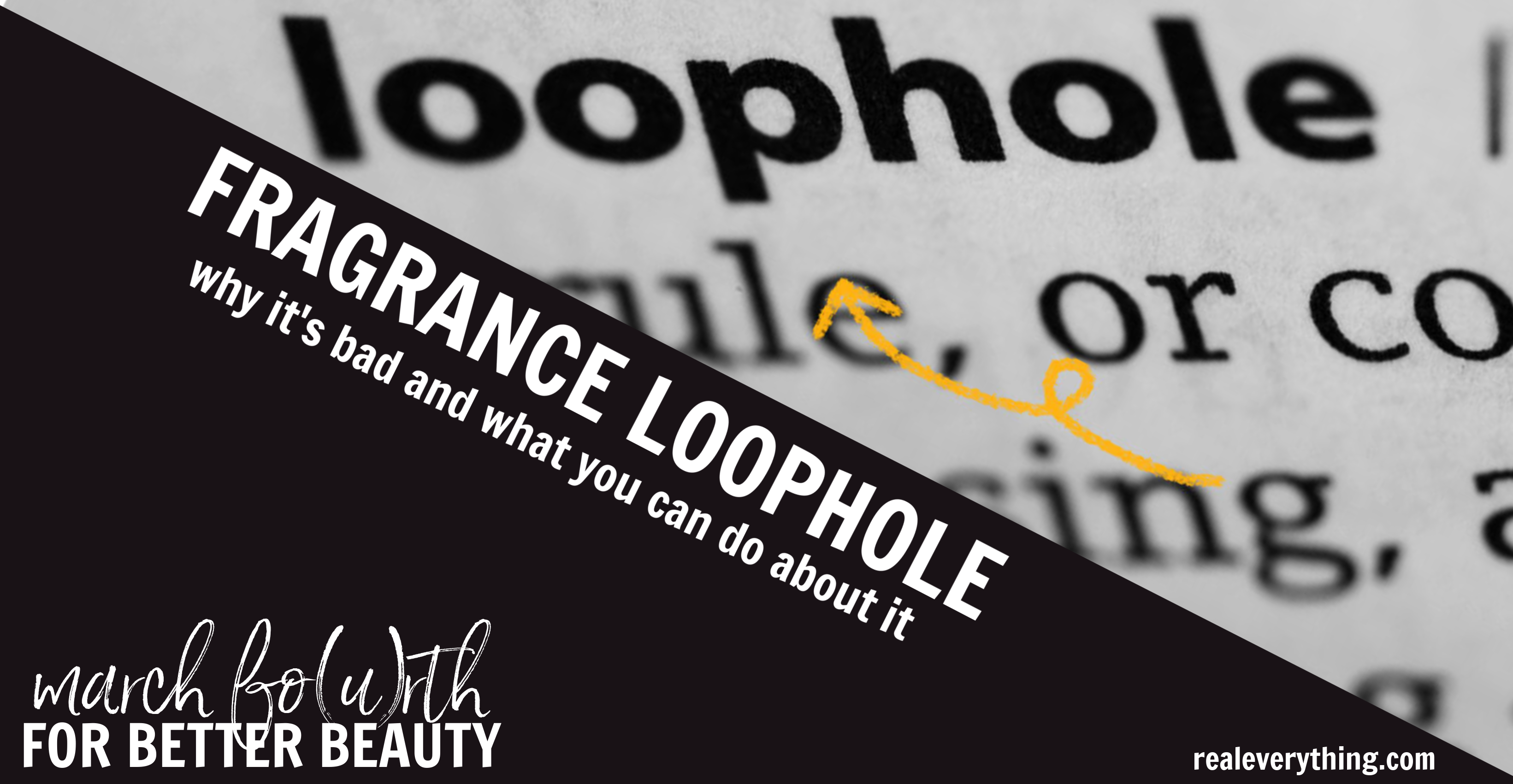
Why the Fragrance Loophole is Bad
The governing body of personal care products in the US is the Food & Drug Administration (FDA). They are responsible for products intended to be applied to a person’s body to make the person more attractive – from perfume and makeup to shampoo and shaving cream. Here is the explanation from their website of what I will refer to as the fragrance loophole:
The law does not require FDA approval before they go on the market. [nor can the FDA mandate a recall]
If a cosmetic is marketed on a retail basis to consumers… each ingredient must be listed individually. But under U.S. regulations, fragrance and flavor ingredients can be listed simply as “Fragrance” or “Flavor.” Some products labeled “unscented” may contain fragrance ingredients. This is because the manufacturer may add just enough fragrance to mask the unpleasant smell of other ingredients, without giving the product a noticeable scent.
FDA requires the list of ingredients under the Fair Packaging and Labeling Act, but this law is not allowed to be used to force a company to tell “trade secrets.” Fragrance and flavor formulas are complex mixtures of many different natural and synthetic chemical ingredients, and they are the kinds of cosmetic components that are most likely to be “trade secrets.”
Some individuals may be allergic or sensitive to certain ingredients in cosmetics, food, or other products… Some components of fragrance formulas may have a potential to cause allergic reactions or sensitivities for some people.
FDA does not have the same legal authority to require allergen labeling for cosmetics as for food. So, if you are concerned about fragrance sensitivities, you may want to choose products that are fragrance free, and check the ingredient list carefully. (1, FDA.gov)
EFFECTS
Fragranced consumer products, such as cleaning supplies, air fresheners, and personal care products, are a primary source of indoor air pollutants and personal exposure. Research indicates that fragranced products can trigger adverse health effects, with implications for workplaces and public places.
- 34.7% of the population reported health problems, such as migraine headaches and respiratory difficulties, when exposed to fragranced products.
- 15.1% have lost workdays or a job due to fragranced product exposure in the workplace.
- 20.2% would enter a business but then leave as quickly as possible if they smell air fresheners or some fragranced product.
- Over 50% of the population would prefer that workplaces, health care facilities and professionals, hotels, and airplanes were fragrance-free.
- Over 60% would not continue to use a fragranced product if they knew it emitted pollutants.
- 19% reported breathing difficulties, headaches, or other health problems when exposed to air fresheners and deodorizers.
- 10.9 % reported health problems from the scent of laundry products vented outdoors. (12, PMC5093181)
Numerous studies provide strong evidence that fragranced products can trigger adverse health effects in the general population, such as migraine headaches, asthma attacks, respiratory difficulties, neurological problems, mucosal symptoms, and contact dermatitis. Fragranced products emit a range of volatile organic compounds (VOCs), such as terpenes, which often dominate pollutants found indoors and generate secondary pollutants such as formaldehyde. And, reducing exposure to fragranced products, such as through fragrance-free policies, can provide cost-effective and relatively simple ways to reduce risks and improve air quality and health.
INHALATION
As “fragrance” can be found as an ingredient from a vast variety of items, when prioritizing switching to safer, you’ll find conflicting information on the internet. Where some may recommend switching to products you use in the largest quantities, I find the science instead supports removing items that could be inhaled. Specifically, absorption by the body is much higher when inhaled or ingested vs. absorbed through the skin (60% vs .5% in the case of Cadmium). Source (NIH’s National Library of Medicine publication) (2) (3) and (4) as well as CDC (5)
Potentially hazardous, undisclosed ingredients found in products with fragrance:
EWG Orange (3-6 moderate risk)
Cyclopentasiloxane, EWG 3
Methylparaben, EWG 4
Hydroxyindole, EWG 5
Benzophenone, EWG 4
Aminophenol, EWG 5
Toluene / Butylated hydroxytoluene (BHT), EWG 5
FD&C red N4 (CI 14700, CI 15850), EWG 6
Methylparaben, EWG 4
Galaxolide, EWG 6
Benzyl Salicylate, EWG 5
Triethanolamine, EWG 6
Triethylene glycol, EWG 4
Oxybenzone, EWG 7
Benzyl Salicylate, EWG 5
Benzalkonium Chloride, EWG 6
Oxybenzone, EWG 4
Cashmeran, EWG 4
Triethanolamine, EWG 6
d-Limonene, EWG 6
Benzyl Alcohol, EWG 6
EWG Red (7-10 high risk)
Propylparaben, EWG 9
Cyclomethicone, EWG 10
Phenylphenol, EWG 8
Octinoxate, EWG 7
FD&C BLUE N1 OR N4 (CI 142090), EWG 8
Benzene (carcinogen contaminant), EWG 10
Biphenyl (contaminant), EWG 10
Methyl Salicylate, EWG 8
Stearalkonium Chloride, EWG 7
-phthalates, EWG 7
Methylisothiazolinone, EWG 7
Methyl salicylate, EWG 8 (BCPP, 11)
Yes, our skin is our largest organ, and it is porous and can absorb what is put onto to the bloodstream. But healthy skin provides a barrier to actually keep many ingredients of concern out. However, powder cosmetics that you inhale, cosmetics put on your lips that are ingested, sprays, and candles or home plug-ins are inhaled. They have direct access to be absorbed and bypass our body’s natural protective mechanisms.
The problem simply is, products do not disclose their ingredients – especially those undisclosed from the “fragrance loophole.”
A full list of ingredients easier to keep track of that I personally avoid are:
- Parabens
- Phthalates
- Sulfates (SLS)
- Microplastics
- Nanoparticles
- Chemical sunscreens (oxybenzone, octinoxate, octocrylene)
- Petroleum, Petrolatum, Mineral Oil
- Butylated hydroxytoluene (BHT, or toluene)
- Butylated hydroxyanisole (BHA)
- Retinol and Retinol derivatives
- “Fragrance” or “Parfum”
And I prefer to shop from brands that are both transparent (B Corp) and who do proactive safety testing that they fully disclose.
CONTAMINATION
In addition to known ingredients that could be potentially harmful, we as consumer have to also be concerned about contamination. There have been numerous instances of known carcinogens in sprays and powders which the FDA does not have the authority to pull from the market in order to protect consumers. Some examples:
- Johnson’s Baby Powder contains carcinogen asbestos (6, FDA)
- Beauty Plus Global and Claire’s Stores, Inc. found numerous cosmetic products tested positive for asbestos (6, FDA)
- Numerous (spray) sunscreens and deodorants found to contain carcinogen benzene (7, Consumer Reports)
- The U.S. Environmental Protection Agency (EPA) finds that laundry vents emit air pollution with carcinogenic toxins from perchloroethylene and petroleum laundry detergents (8 & 9, EPA)
- The journal of Air Quality, Atmosphere and Health, show that air vented from machines using the top-selling scented liquid laundry detergent and scented dryer sheet contains hazardous chemicals, including two that are classified as carcinogens. (16, AQAH)
- EPA classifies seven of the VOCs found in dryer-vent emissions—acetaldehyde, benzene, ethylbenzene, methanol, m/p-xylene, o-xylene, and toluene—as hazardous air pollutants (10, PMC3226517)
- A 2009 testing showed Febreeze Air Effects contained 89 airborne contaminants that were not disclosed on the label. (15, EWG)
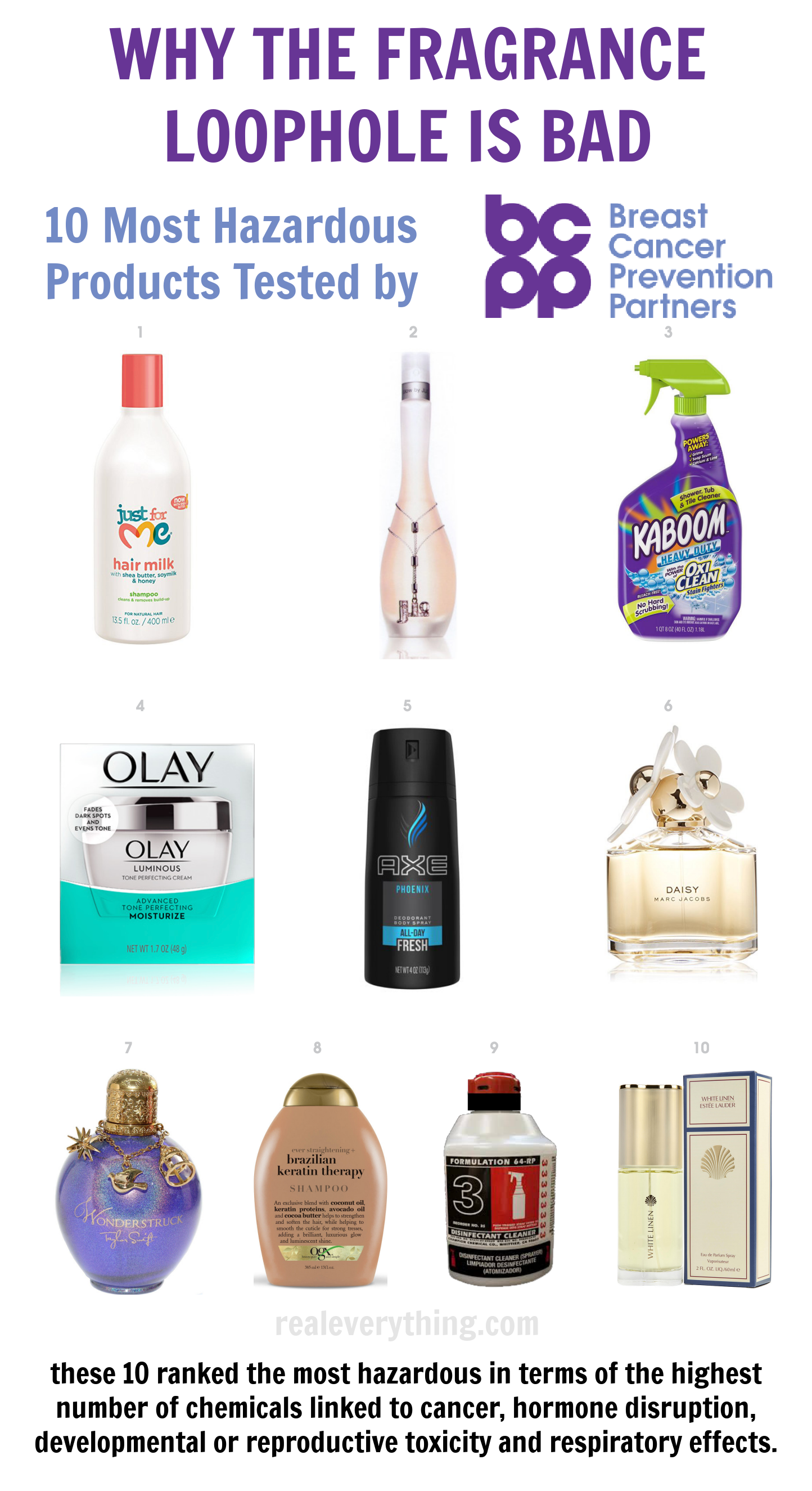
Ingredients in Personal Care
Breast Cancer Prevention Partners did a study analyzing (undisclosed) ingredients in personal care, the following are the 10 products that ranked the most hazardous in terms of the highest number of chemicals linked to cancer, hormone disruption, developmental or reproductive toxicity and respiratory effects from the 2018 study (11):
- Just for Me Shampoo: A children’s shampoo, from a hair-relaxing kit marketed to kids of color by Strength of Nature.
- JLo Glow Perfume: A fine fragrance made by Coty and endorsed by music, television and film icon Jennifer Lopez.
- Kaboom with OxiClean Shower Tub & Tile Cleaner: Marketed as a “great cleaner that is safe and friendly to use,” made by Church & Dwight Co.
- Olay Luminous Tone Body Lotion: Made by Procter & Gamble and marketed for its anti-aging qualities.
- Axe Phoenix Body Spray: A body spray made by Unilever and marketed to young men using an overtly sexual ad campaign.
- Marc Jacobs Daisy Perfume: Another Coty fragrance that carries the famous designer’s name and uses beatific, radiant young girls in its marketing campaigns.
- Taylor Swift Wonderstruck Perfume: A Revlon fine fragrance endorsed by the beloved pop country singer Taylor Swift.
- Organix (OGX) Shampoo: A Johnson & Johnson product marketed as part of a “green/sustainable” line of products to young women.
- Formulation 64-RP: An industrial cleaner/disinfectant used by custodians, firefighters and others.
- White Linen Perfume: Created by Estée Lauder in 1978, marketed as “a beautiful perfume” for women young and old.
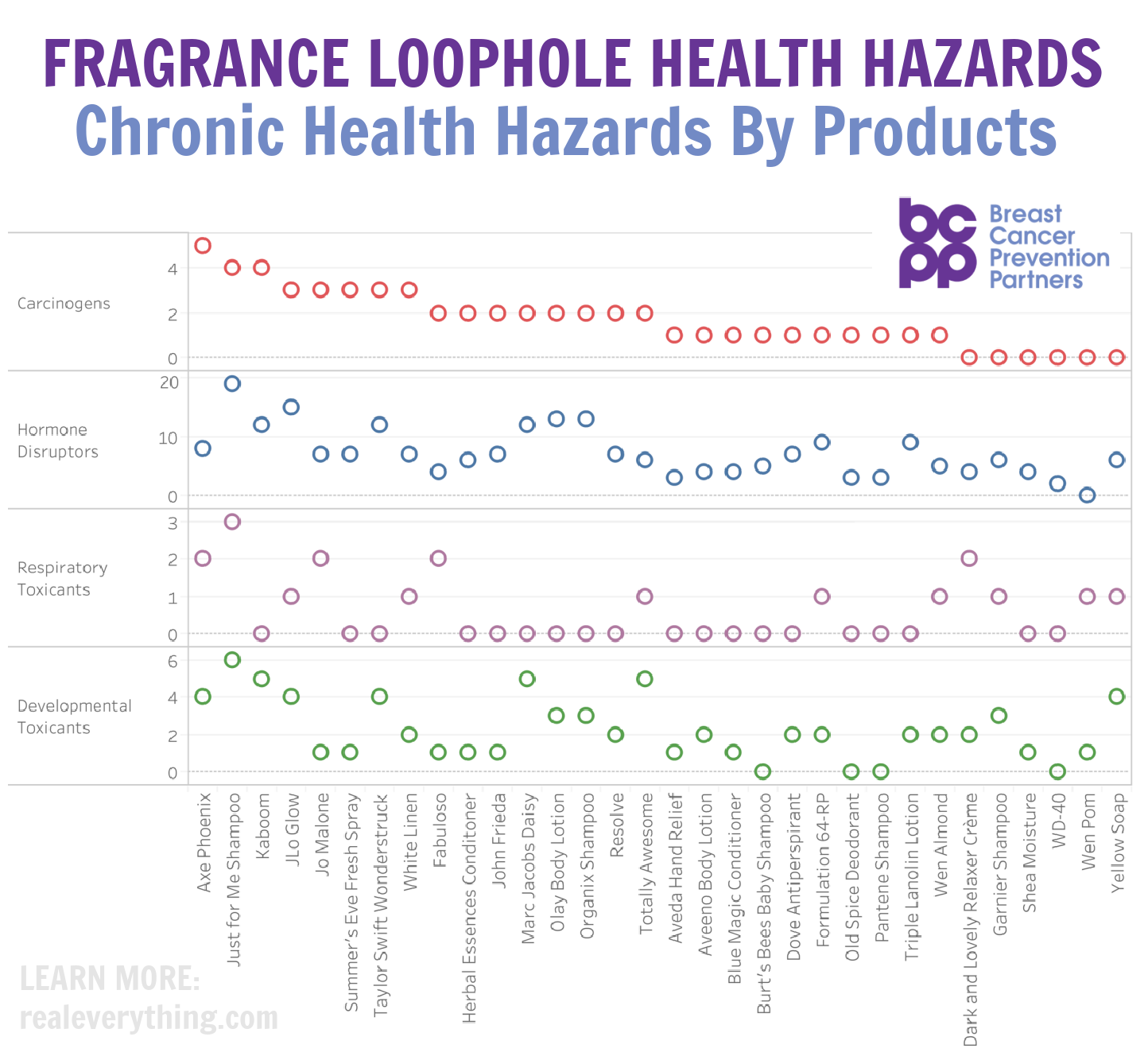
Within the report, BCPP asks some of the very questions we as consumers wonder:
- If trade associations are so confident about the safety of ingredients in their product sectors, why are they fighting ingredient disclosure?
For example, in a recent panel I attended with the Senator who spear-headed Hawaii’s Safer Sunscreen bill, he noted that the loudest complaints came from the personal care industry. - A gaping federal labeling loophole combined with a $70 billion self-regulated fragrance industry is creating a buyer beware situation for consumers.
Fragrance is big business in the United States and abroad. The value of the North American flavor and fragrance market amounted to over US$7 billion in 2020; the global fragrance market is estimated to be worth about $92 billion. - 1 in 4 of the fragrance ingredients we detected were linked to adverse, chronic health effects.
Just within fragrance, between 50 and 250 ingredients that they create each year – none of which are validated by government for consumer safety. - More than one-quarter of the 338 fragrance ingredients found in both personal care and cleaning products are linked to adverse health effects. In total, 99 of the fragrance chemicals have health concerns.
In addition to the chemicals used in fragrance, BCPP identified 10 contaminants: five carcinogens, two are specifically linked to mammary gland tumors; six are potential endocrine-disrupting compounds (EDCs), and six are linked to developmental or reproductive toxicity. One is linked to neurotoxicity, five are linked to skin irritation, and one is considered to be persistent, bioaccumulative and toxic. - The presence of unlabeled chemicals linked to such a broad array of health concerns should raise a red flag for consumers, given that most of us regularly pour, spray
and rub a multitude of fragranced personal care products on our bodies every day.
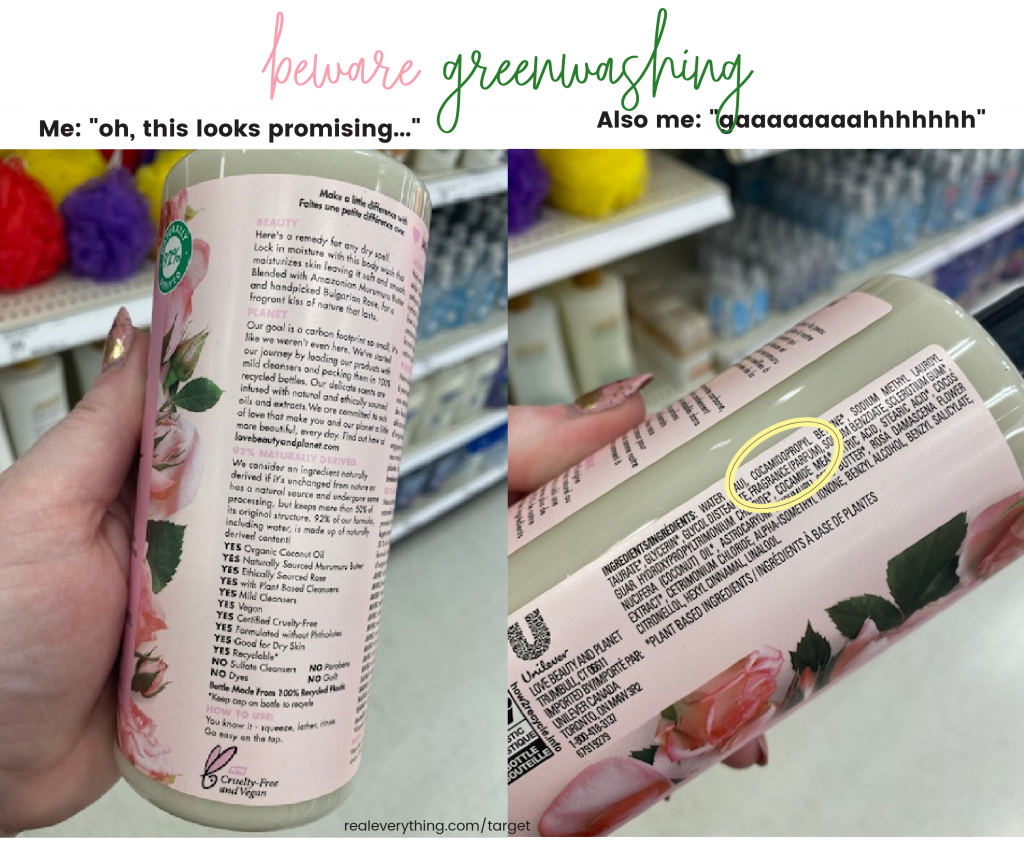 learn more on Natural or Not: Target Clean Cleaning Households Good Guide
learn more on Natural or Not: Target Clean Cleaning Households Good Guide
CLEANING PRODUCTS
Household items are often the ones we seek to have a pleasant aroma to neutralize stink. I get it, I’ve got 2 dogs, a cat, and 4 teens. I want something to help my home smell better too!
What cleaning products are safe?
Sadly, many cleaners labeled as “natural” contain dangerous fragrances, dyes, preservatives, allergens, and irritants. Check out these surprising safety ratings from the Environmental Working Group (EWG) that show “natural” brands earning the same safety ratings of “high” or “highest” concern, comparable to standard, conventional cleaners:

So as much as you might want your children to help you clean, you can’t be sure your “natural” cleaning product is actually safe enough to use around them.
How can I tell what ingredients are in my cleaning products?
I wish we could! Like personal care products loopholes with an outdated law (1938), cleaning products aren’t far behind (1976). Nowadays, there are so many more chemicals than when the law was established! Manufacturers of cleaning products do not have to disclose all of their products’ ingredients on their packaging labels. Shocking, right? How do you find toxic chemical free cleaners? First, look for specificity. Many manufacturers use vague terms that can hide all sorts of toxic ingredients. For example “fragrance” can actually mean a cocktail of undisclosed ingredients, when even natural fragrances can cause allergic reactions. Other vague descriptions to watch for are “surfactants“, “cleaning agents” or “preservatives”, where the lack of specificity means you can’t easily research the ingredients yourself. An example of this is methylisothiazolinone, which manufacturers often label simply as “preservative.”. Given its association with lung toxicity, allergies, and possible neurotoxicity – brands often “hide” it.
Does the government test and regulate safety of cleaning products?
Ready for a jaw-dropper? Only about 300 out of some 62,000 approved chemicals for use in the US have undergone safety testing. The last time the law governing the safety of chemical products was changed, the cost of gas was $.59 a gallon and the average cost of a new house was $43,400: 1976. That means the onus is really on you to do your own research.
The good news: the Environmental Working Group, which has a searchable database of products, is an excellent resource for researching cleaning product health and environmental safety. [source: read more at Force of Nature’s website]
We have lots of data to support that inhaled cleaning products cause harm to our health. So, if you do need to be around less safe options, wear a mask!
LEGISLATION
Despite groundbreaking federal legislation in both the United States and Canada, the fragrance loophole remains. While MOCRA in the US attempted to empower the FDA with recall authority and include fragrance allergen disclosures (including to consumers), the implementation of the law has been indefinitely put on hold from both corporate push-back and lack of funding to both EPA and FDA.
Fortunately, states are still able to push forward with their own legislation with even tighter restrictions. And with states like California and Oregon paving the way, we may see brands start to become accountable across the US. But there is nothing protecting all consumers today.
If you’d like to let your representatives know that this is an important topic for you and your family, call or make an in-person appointment. These have a HUGE impact. Or, if you can spare even just one minute, you can send a simple text and have it draft a letter to your specific legislators:
If you live in the U.S.: Text RAISEUPBEAUTY to 52886* or click here to contact your Members of Congress and urge them to support the Safer Beauty Bill Package.
If you live in Canada: Click here to contact your Members of Parliament and urge them to strengthen personal care product laws now.
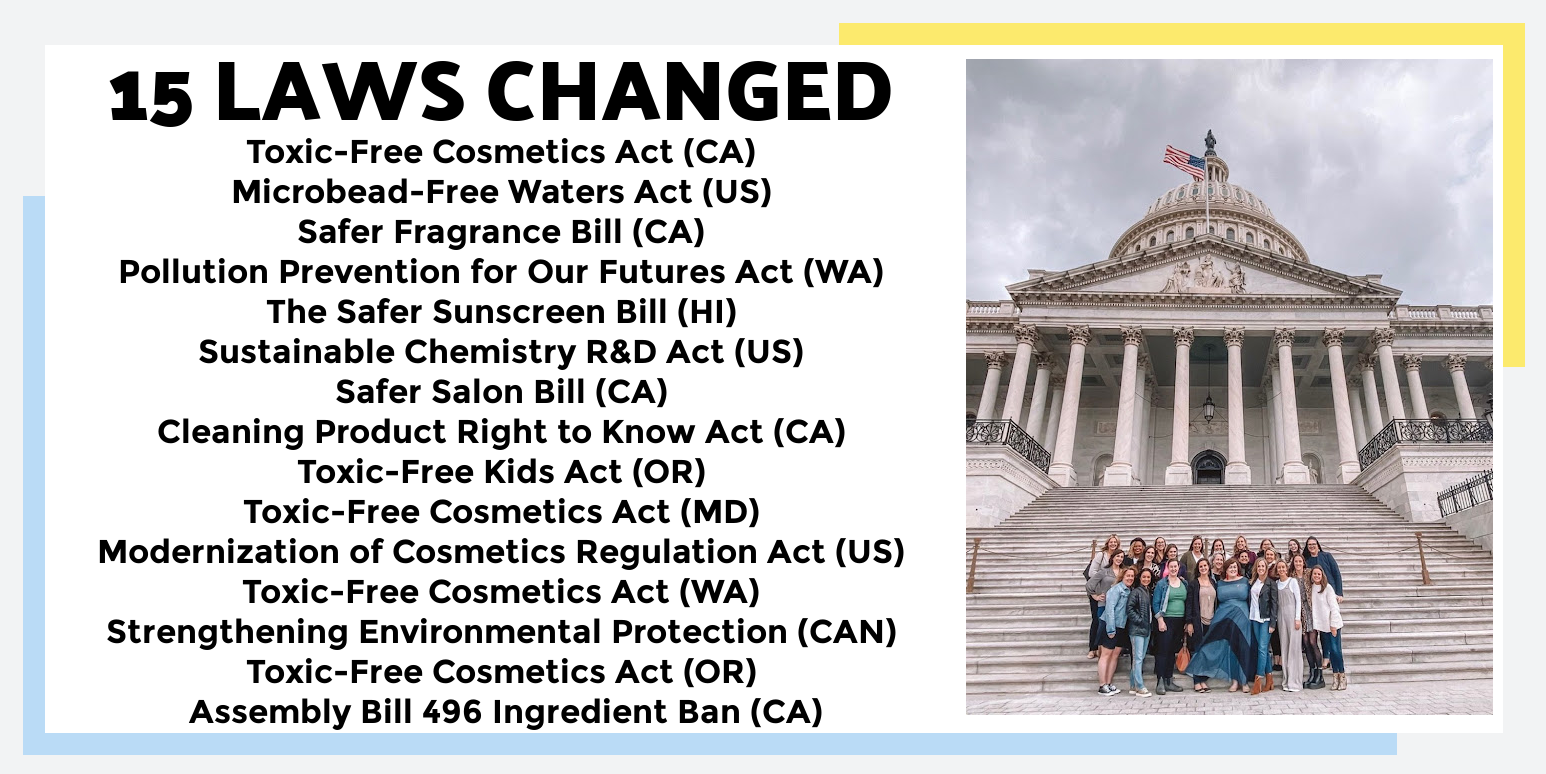
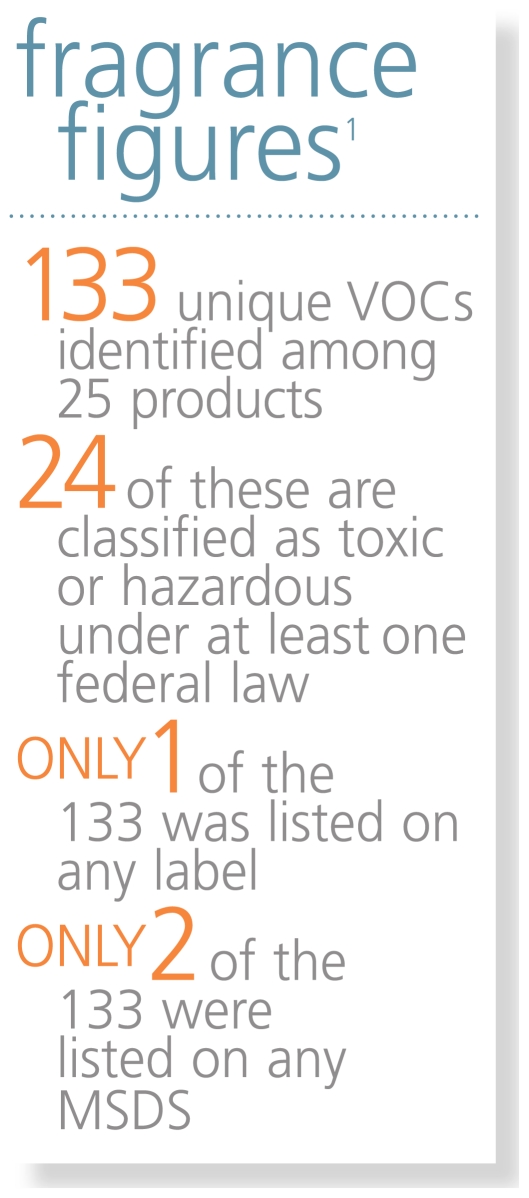
What to Use Instead
A survey of selected scented consumer goods showed the products emitted more than 100 volatile organic compounds (VOCs), including some that are classified as toxic or hazardous by federal laws. Even products advertised as “green,” “natural,” or “organic” emitted as many hazardous chemicals as standard ones. The Consumer Product Safety Commission, which regulates cleaning supplies, air fresheners, and laundry products, currently does not require manufacturers to disclose any ingredients on the label, including fragrances in these products. The same is true for fragrances in personal care items, which are overseen by the Food and Drug Administration. The Household Product Labeling Act, currently under review in the U.S. Senate, would require manufacturers to label consumer products with all ingredients, including fragrance mixtures. (13, PMC3018511)
Disclosing all ingredients could be a first step to understanding potential toxicity and health effects. What I recommend:
- avoid any product that includes the word “fragrance” or “parfum” or “cologne” in the ingredient list
- the laundry sheets we use, they’re unscented and sustainable without any nanoplastics
- dishwashing pods (that work) without “fragrance”
- upcycled ocean plastic trash bags, because yes – those often are scented too
- the hand wash we use, in a huge refill bag for sustainability
- a hair spray without any fragrance
- Biome disinfecting wipes
- Force of Nature all purpose cleaner
- Vegamour hair products use fruit oils without synthetic fragrances, ingredients are fully disclosed
- EWG-verified items with scent, Henry Rose and Beautycounter’s Clean Eau de Parfum both fully disclose ingredients
- Beautycounter’s bath, body and skincare all fully disclose ingredients and are EWG-verified safe
Learn More
Introducing Beautycounter’s Perfume – Clean Eau de Parfum Scent & Safer Swap Guide (more details on the graphic above)
Consider aromatherapy, but be mindful of risks and sustainability concerns (learn more on The Whole View ep 39 with Ky Washington, Self-Care Rituals and Aromatherapy).
Learn more on my podcast, The Whole View episode 395 where I address the fragrance loophole:
REFERENCES
- FDA.gov, Fragrances in Cosmetics
- Toxicity, mechanism and health effects of some heavy metals, PMC4427717
- The Health Effects of Aluminum Exposure, PMC5651828
- CDC, Case Studies in Environmental Medicine
- FDA Advises Consumers to Stop Using Certain Cosmetic Products
- Consumer Reports, Benzene, a Known Carcinogen, Has Been Found in Some Spray Sunscreens, Deodorants, and Other Products
- EPA, Reducing Air Pollution from: Dry Cleaning Operations, 1
- EPA, Reducing Air Pollution from: Dry Cleaning Operations, 2
- Dryer Vents: An Overlooked Source of Pollution? PMC3226517
- BCPP, Exposing toxic fragrance chemicals in beauty, personal care, and cleaning products.
- Fragranced consumer products: exposures and effects from emissions, PMC5093181
- Environmental Health Perspective’s INDOOR AIR QUALITY: Scented Products Emit a Bouquet of VOCs, PMC3018511
- Environmental Impact Assessment Review, Fragranced consumer products: Chemicals emitted, ingredients unlisted
- EWG, Your best air freshener isn’t an air freshener
- Air Quality, Atmosphere & Health International Journal, 11869
- RealEverything, First Federal Law Update to Personal Care since 1938: All About the Modernization of Cosmetics Regulation Act (MOCRA)
- RealEverything, The Whole View Episode 395
You can keep up each week on Instagram and our newsletters.
Never want to miss a better beauty post, sale, or deal? Join my Healthy Inside & Out email list for more info on non-toxic living and safer skincare!

